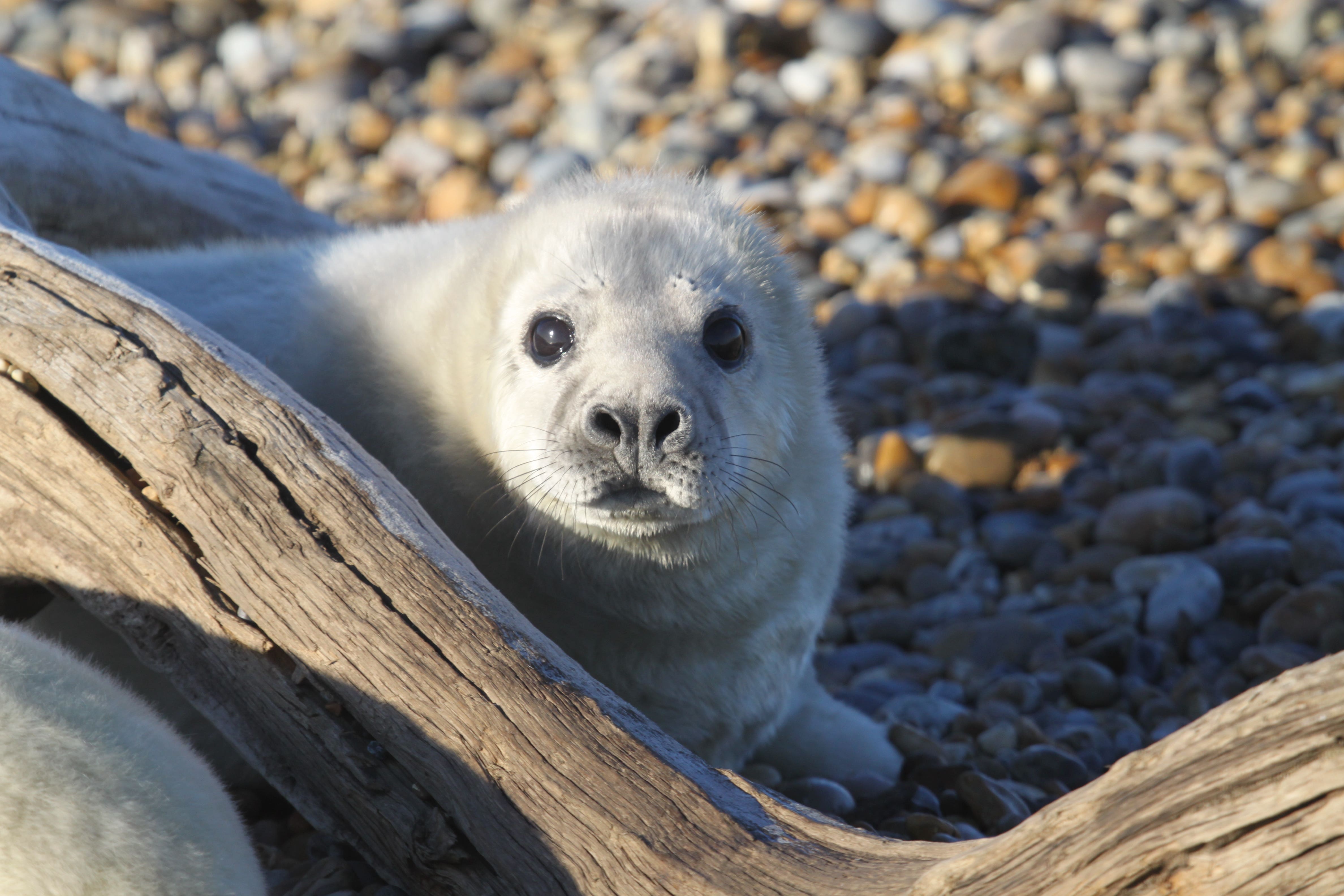Grey seal colony makes its home at former Cold War weapons testing site
More than 130 grey seal pups have been born at Orford Ness, a remote shingle spit, this breeding season.

Your support helps us to tell the story
From reproductive rights to climate change to Big Tech, The Independent is on the ground when the story is developing. Whether it's investigating the financials of Elon Musk's pro-Trump PAC or producing our latest documentary, 'The A Word', which shines a light on the American women fighting for reproductive rights, we know how important it is to parse out the facts from the messaging.
At such a critical moment in US history, we need reporters on the ground. Your donation allows us to keep sending journalists to speak to both sides of the story.
The Independent is trusted by Americans across the entire political spectrum. And unlike many other quality news outlets, we choose not to lock Americans out of our reporting and analysis with paywalls. We believe quality journalism should be available to everyone, paid for by those who can afford it.
Your support makes all the difference.A grey seal colony has established itself at a former Cold War weapons testing site on the Suffolk coast.
More than 130 grey seal pups have been born at Orford Ness, a remote shingle spit, this breeding season.
Rangers said the blubbery mammals have used the ex-military site as a breeding ground every year since 2021, following a reduction in visitor access because of the pandemic.
It is thought they spilled over from well-populated colonies in Norfolk, including at Blakeney and at Horsey, and are now Suffolk’s first breeding grey seal colony.
Orford Ness was used as a military test site during both world wars and into the nuclear age, before the Ministry of Defence sold it to the National Trust in 1993.
Matt Wilson, countryside manager for the National Trust’s Suffolk and Essex Coast portfolio, said: “The first 200 adult seals arrived at the site in 2021, after an extended period of closure due to the pandemic, when visitor access was significantly reduced.
“Since then, numbers have increased year-on-year as the colony has established.
“Although grey seals can often be spotted in the waters around Suffolk, we believe this to be the county’s first breeding colony.”
Female grey seals, known as cows, can live for 30 to 35 years and have their first pups between the ages of three and five.
They usually return to the same place each year to give birth.
Male grey seals live for about 20 to 25 years.
Mr Wilson said rangers have conducted weekly seal counts at Orford Ness since the start of October, averaging more than 250 adult seals per week, and sometimes up to 500.
The first pups were counted in November, with 130 at the most recent count.
The breeding season for grey seals runs from October to March, which is when Orford Ness is closed to visitors, and as a result disturbance has been kept to a minimum.
“Part of the reason we think the colony has established itself here is the remote nature of the site and lack of disturbance, and of course we want that to continue,” said Mr Wilson.
“We also believe it’s a sign of healthy numbers of grey seals along the eastern coastline, as numbers are likely spilling over from well-populated colonies at Blakeney Point, also cared for by the National Trust, as well as Horsey Gap.
“We understand that people will want to see the colony now they know it’s here, but it’s important we continue to limit disturbance, to give the pups the best chance of survival.”
He said guided access may be offered next winter, but asked that people do not visit out of season and avoid using drones in the area.
Glen Pearce, Orford Ness’s property operations manager, said: “Since the seals’ arrival in 2021, our team of volunteers and staff have monitored the seals from a distance, keeping the growing seal colony a secret.
“This has helped to keep these vulnerable wild animals protected at a crucial stage of their development.
“However, the colony has now grown to a size where we want people to share this amazing wildlife success story with our supporters, but also to advise visitors how they can help us protect the colony.
“Unauthorised access, by foot, boat or drone, is illegal and also dangerous because of the unique and remote nature of the former military site.”
Subscribe to Independent Premium to bookmark this article
Want to bookmark your favourite articles and stories to read or reference later? Start your Independent Premium subscription today.